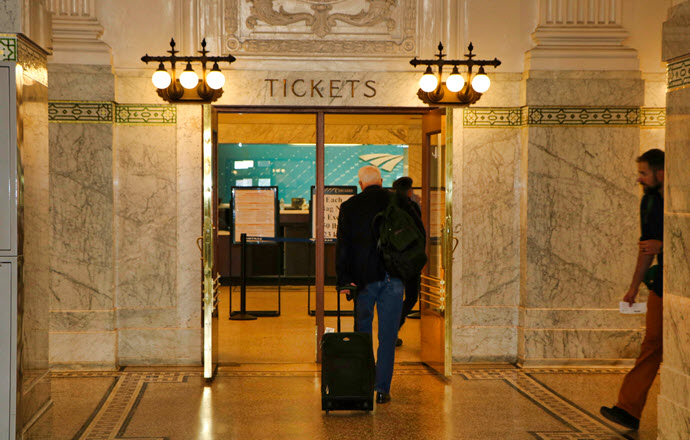By Ed Perkins, Tribune Content Agency
Countries with good passenger rail systems offer unlimited-travel rail passes to foreign visitors. The list includes most of Europe and the United Kingdom plus Japan, countries where trains are fast, frequent and go just about anywhere you’d normally want to visit. The tourist offices and online rail agencies push rail passes aggressively. But are rail passes really the best way to go? Let’s look at Japan as an example of how to figure your best bet.
Step 1: Decide where you want to go. I know a few diehard rail fans who regard riding trains as their primary visitor experience, but most travelers use trains to get to the places they want to see. So, let your trip plans dictate your use of trains, not the reverse. For this analysis, I laid out two possible itineraries, both starting and ending in Tokyo:
- The blockbusters: Tokyo-Osaka-Hiroshima-Kyoto-Tokyo.
- The full exploration: Tokyo-Sapporo-Niigata-Kyoto-Hiroshima-Kagoshima-Osaka-Gotemba (for Mt. Fuji)-Tokyo.
Step 2: Decide how long you want to stay at each stop. Most major visitor centers, in Japan or anywhere else, are worth a stay of more than a few hours — some, Kyoto for example, are worth several days — and you need to decide how much time to devote to each stop.
Step 3: Locate the least expensive rail pass that covers your itinerary. With Japan, this is easy; all Japan Rail Passes are continuous, with seven-, 14- and 21-day options, discounts for kids 6 to 11, nothing for seniors.
Step 4: Check out the cost of individual tickets for your trip. In Japan, the outstanding online timetable and fare-finding website, HyperDia.com, makes finding fares and schedules easy, and comparable websites cover other countries and regions.
Step 5: Check out alternatives. In Japan, the only alternatives are regional passes, useful mainly for exploring an area on day trips from a base area. But elsewhere — the UK, Switzerland, and France, for example — you can buy cards that give 33 percent to 50 percent discounts on all train tickets for up to a year.
Step 6: Compare costs and decide on the best alternative.
In Japan, the rail pass is a no-brainer, even for someone who wants to cover no more than just the blockbusters. Individual tickets for that Tokyo-Osaka-Hiroshima-Kyoto-Tokyo itinerary would cost $439; a seven-day Japan rail pass costs $255 and even a 14-day pass costs $407. Individual tickets for that eight-stop trip would cost $1,279, much more than even a 21-day pass, at $521. The rail passes are good deals even if you “waste” lots of potential travel days. And those days aren’t always wasted, either: You can use the rail pass for short day trips and even some local travel.
You may want to consider first class. In Japan, first-class “Green Car” rail pass prices cost 33 percent to 35 percent more than “ordinary” class. The extra cost gives you 2-2 seating and extra legroom in the high-speed Shinkansen trains rather than the 2-3 seating in ordinary class. Unlike some European trains, Green Car doesn’t include any meal or beverage service or any other special perk, and some trains do not include Green Car at all.
All Green Car travel requires seat reservations, a benefit guaranteeing you a seat but an additional hassle to obtain. Although reservations are also available in ordinary class Shinkansens, most trains include several “no advance reservation” ordinary class cars. Obviously, the first-class choice depends on how much you value extra room and privacy. Fortunately, with rail passes, the price premium is a lot less than with airfares.
Some writers advocate starting a rail pass evaluation by figuring the average cost per day of each feasible pass, and then deciding whether you’re likely to spend that much on separate train tickets. I don’t like that approach; it puts the emphasis on train riding rather than seeing what you want to see.
The conclusion that rail pass is a no-brainer choice in Japan is not universal. In Europe, you have more pass choices and more ticket options. I’ll cover European passes sometime next spring for summer travel. But my overall take is that passes are a good choice more often than a poor one.
(Send e-mail to Ed Perkins at eperkins@mind.net. Also, check out Ed’s rail travel website at Rail-Guru.com.)
(c) 2017 TRIBUNE CONTENT AGENCY, LLC.– October 31, 2017


Leave a Reply